Shozy Hibiki – Sweet and Tasty
Shozy is a pretty big company from China, well-respected by music lovers from all over the world for their accessible yet high-quality products. We’re going to take a look into the performance of their affordable IEM, Shozy Hibiki, which is priced at just 60 USD.
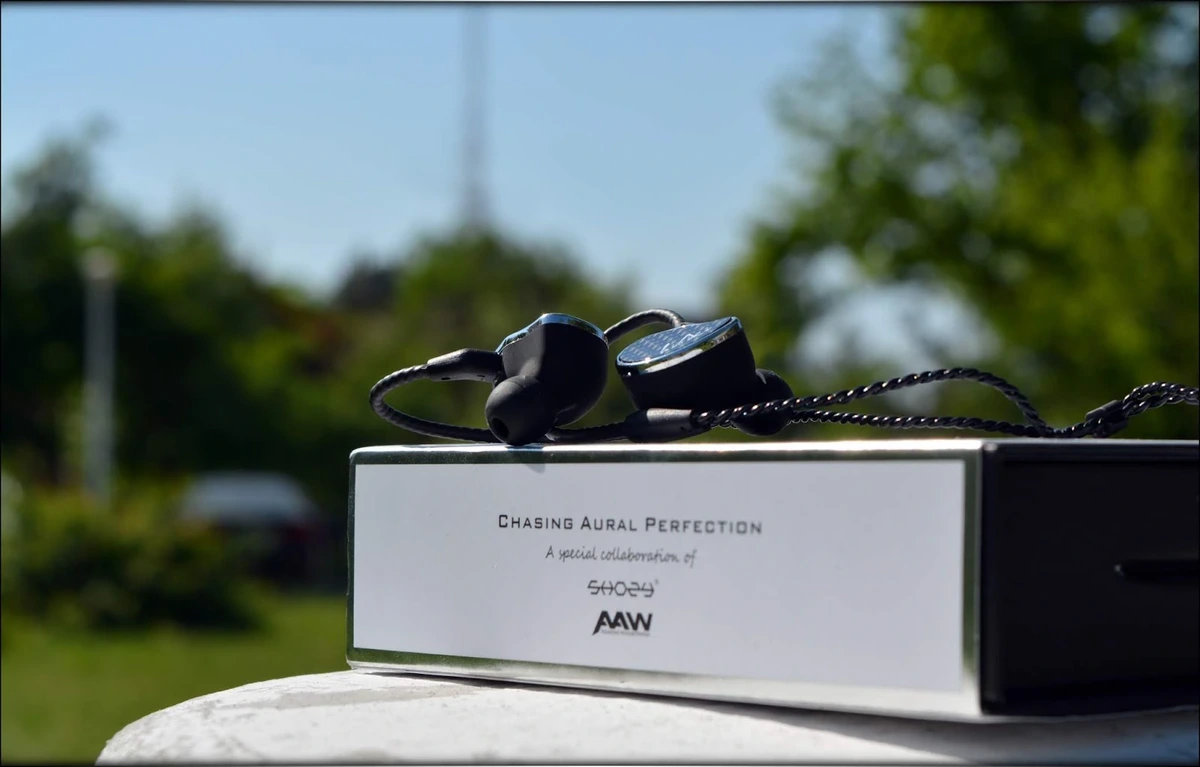
Introduction
Shozy is a rather friendly company from China, who has worked in developing and bringing In-Ears at affordable prices to the average music lover. Their achievements are best known by those looking for an affordable IEM that still has the build quality, and the design of a higher-end product. Shozy is known to offer good support to their customers, and they are known to be great with warranty, but happily there have been very few cases of people needing warranty for Shozy products in the past.
It should be noted that I have absolutely no affiliation with Shozy, I am not receiving any incentive for this review or to sweeten things out. This review is not sponsored nor has been paid for by Shozy or anyone else. I’d like to thank Shozy for providing the sample for this review. The sample was provided along with Shozy’s request for an honest and unbiased review. This review will be as objective as it is humanly possible, and it reflects my personal experience with Shozy Hibiki. Every opinion expressed is mine and I stand by it, the purpose of this review is to help those interested in Shozy Hibiki find their next music companion.
Product Link
You can find and purcahse the latest Shozy products from www.amazon.com here: https://www.amazon.com/s?k=SHOZY
Packaging
First things first, let’s get the packaging out of the way:
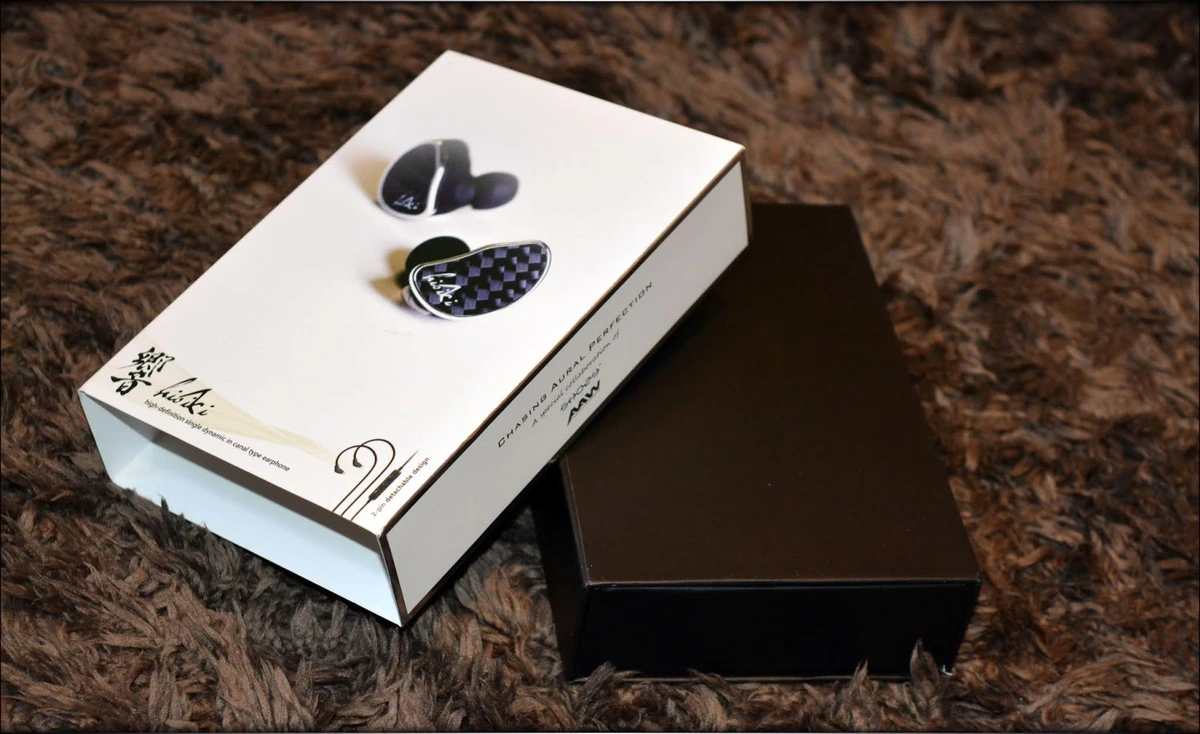
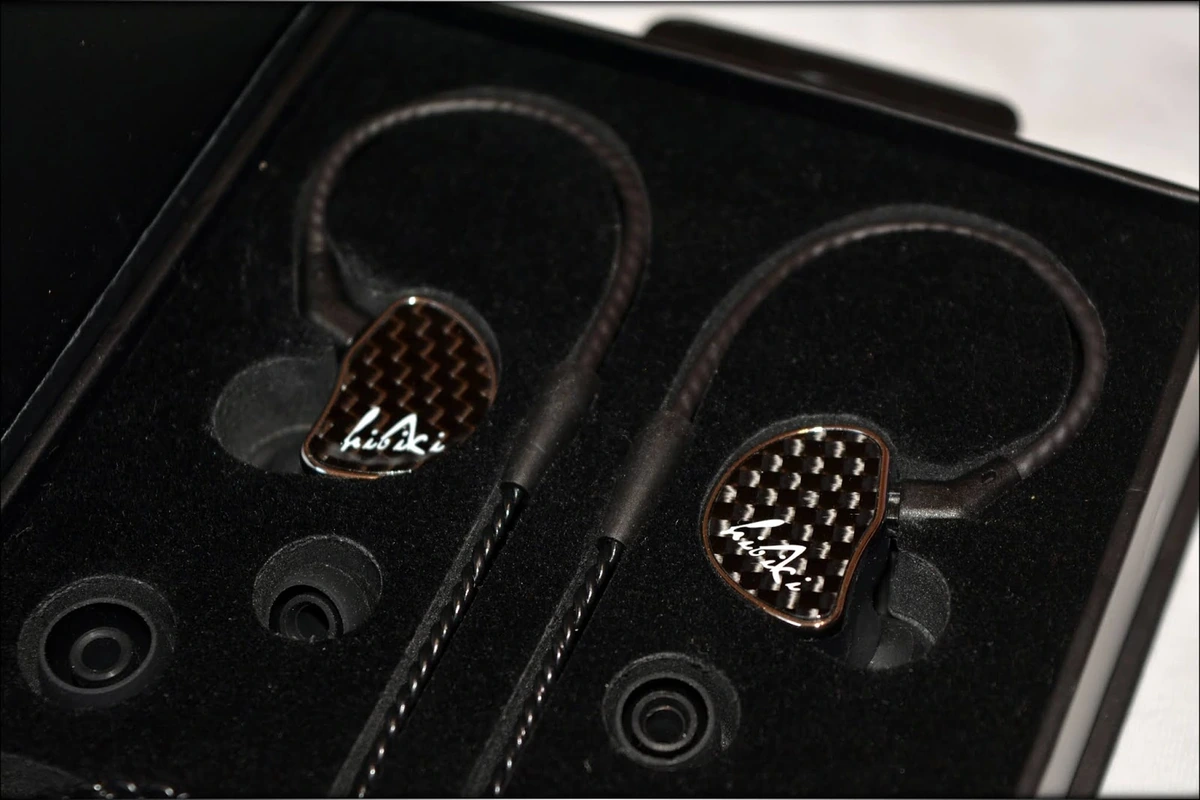
Shozy Hibiki comes packaged in what can be called a fair package. They come seated in a sponge / foam cutout, with two more sets of tips. The outer package design is quite beautiful, and it has a good amount of detail about Shozy Hibiki on it.
The overall package feels premium and well made actually.
The cable they come with is detachable, it has a remote on it, and it looks to be of a pretty good quality. By contrast with Kinera Seed, where we could complain that the cable was from a third party vendor and didn’t match perfectly with the IEM body, Shozy Hibiki’s cable fits perfectly with the IEM body and seems to be made especially for them. There will be a V2 coming out soon, but we don’t have a lot of information on what the changes from the first Shozy Hibiki are.
Besides the IEMs and the tips, there’s nothing else in the package, one of the reasons we said fair. Even so, they are priced at the very friendly price point of 60 USD, where they make a very compelling purchase based on the sound, but more on this in the sonic performance.
Technical Specifications
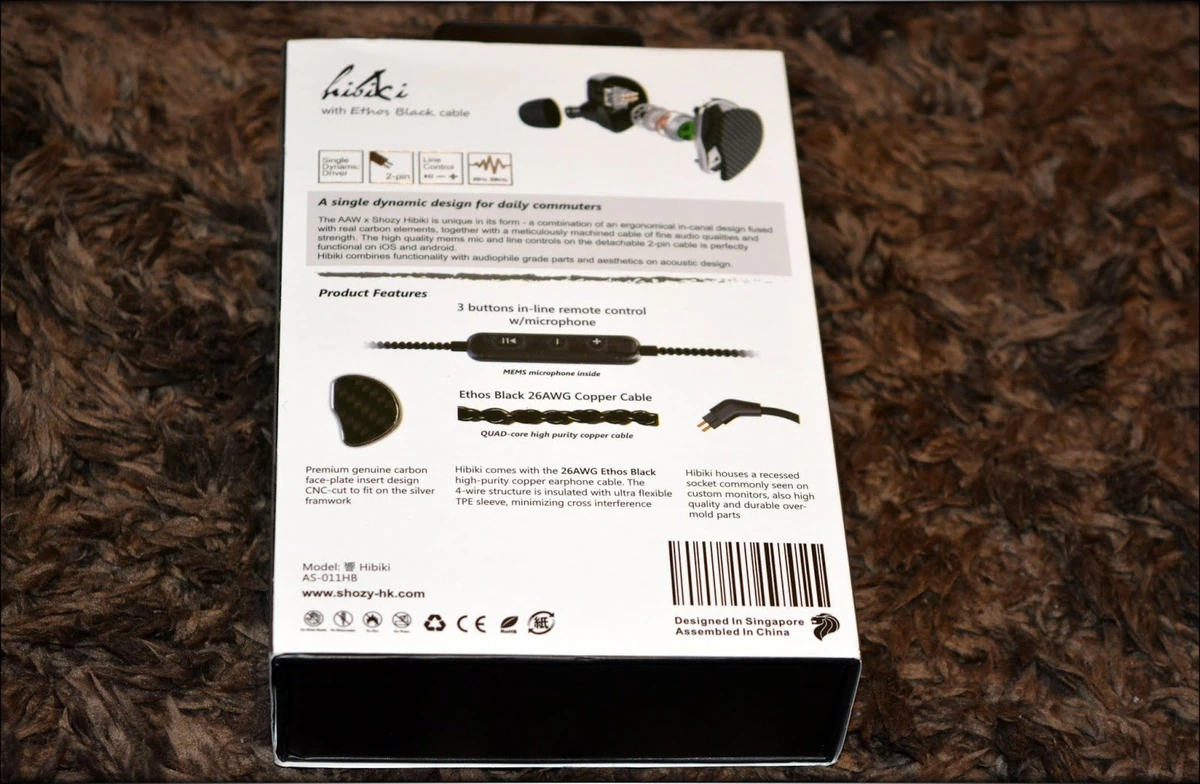
10mm Bio Cellulose Membrane Proprietary Full Range Dynamic
Single Sound Bore Design
Frequency response: 20Hz-40000Hz
Sensitivity: 102dB SPL@1mW
Impedance: 18Ohm@1KHz
THD: ≤0.5%@1KHz
Connector: 2-pin 0.78mm
Plug:3.5mm
Build Quality/Aesthetics/Fit/Comfort
Starting with the build quality, Shozy Hibiki feels quite different from the average 60 USD IEM, which usually has some minor build quality issues, or where you can notice that some build quality had to suffer for the pocket-friendly price. Usually, that point is in the cable, which sometimes is produced for multiple IEMs and doesn’t fit perfectly with the IEM body, but here Shozy has proven to be a real champ, providing an excellent overall experience for their Hibiki, as the cable matches the IEM body perfectly.

The overall build quality is pretty good, plastic all-around, but seems durable, the pieces fit well together, there are no hard edges, and no protruding edges, the whole IEM seems to be assembled well and the cable seems to be of a good quality as well. It even has a remote if you need it, and the overall quality seems higher than the price points dictates.
The outer face plate has a carbon fiber model that looks very sleek and is both a bit industrial and a bit modern in appearance. The inner IEM is made from a rubbery plastic material that fits quite ergonomic.
Which brings us to the comfort, which is great. The IEMs are on the slightly larger side, but their shape is quite ergonomic and they sit well in ears. The included tips look very basic, but they actually have a good quality to them, do not get slippery, and they feel good even after a few hours of wearing.
The cables allow only for over-the-ear wearing, but this means that there is no microphonic noise, and the best part, there is no driver flex now. Since we reviewed the Shozy Zero in the past, and we were quite a bit disappointed by its microphonic noise, we are really happy to notice that Shozy sorted it out in their Hibiki IEM.
We’ve seen quite a few of those Hibiki being worn even in Romania, and since they are not available here directly, you can take into account that people are ordering them directly from Shozy or from other stores, and are still enjoying them quite a lot, so Hibiki is quite loved here, thing which further impressed us, as even some of our friends had a pair, without us knowing before we saw each other wearing it and starting a conversation on their sonic performance.
All in all, we’d say that the build quality and the fit/comfort are golden for a IEM at this price point.
Sound Quality
The sound quality can be written off in one little question: “Do you like midrange?”
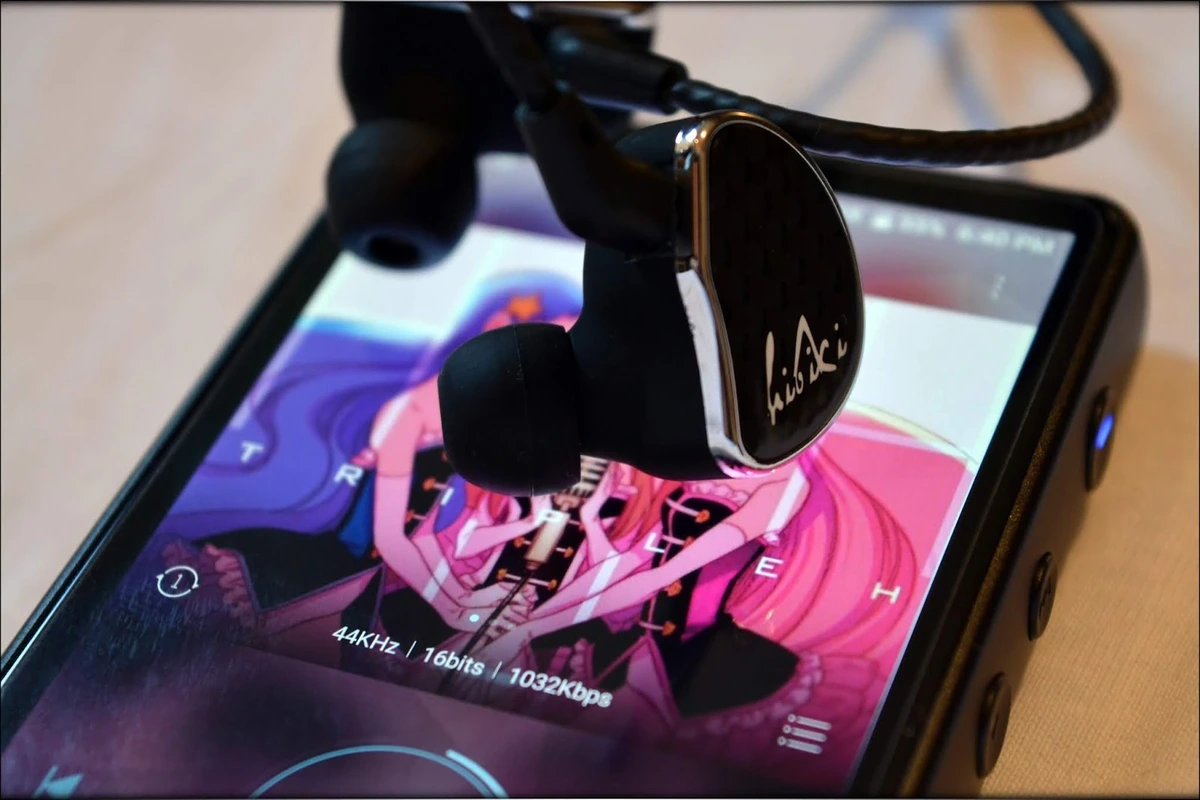
This basically states everything about Shozy Hibiki. They have a really sweet, natural, detailed, relaxed and open-sounding midrange. It is a true beauty to hear, and honestly, very few IEMs, especially at this price point, can compare their midrange with Shozy Hibiki.
The sub-bass and the bass are good, with fair extension, although the sub-bass is not quite the best in extension, it still is good. The mid bass and the sub-bass are both less in quantity than the midrange, so if you’re a basshead, this really is not the best IEM for you. The impact is fairly good, although most of the impact starts to be good from the drums, not exactly from sub-bass impact.
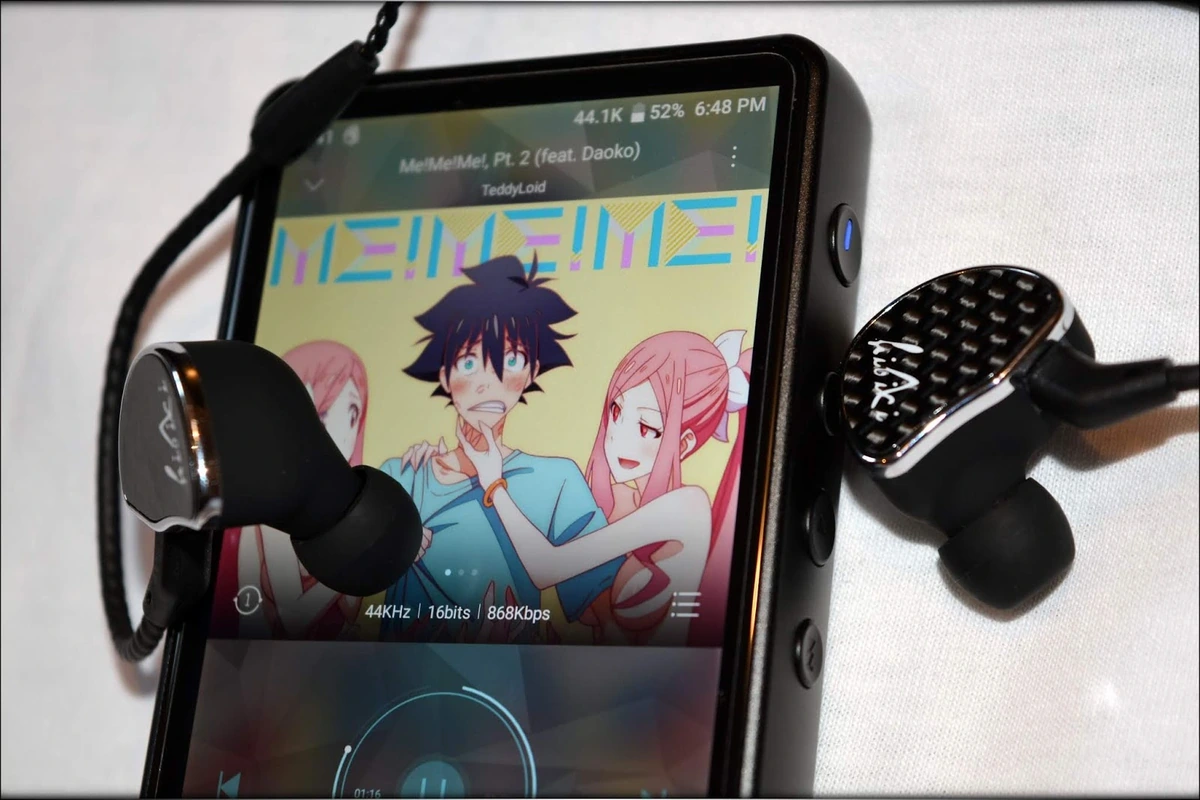
The midrange is extremely good, and quite impressive for the price point. It sounds sweet, sounds natural, and has a delicious amount of detail to it. In fact, it is more impressive than we’re used to seeing at 200$, but it should be noted that it is a forward midrange, so if a V-shaped signature, where the midrange is recessed, is your thing, then Shozy Hibiki won’t be the best choice. But this forward midrange has one thing to it that was actually the main reason we were so impressed, it is not fatiguing. Usually, midrange-forward signatures, like Etymtoic ER3XR, are very revealing and analytical, but can also fatigue the listener, can be too much, but Shozy Hibiki has a good balance of bringing the voices forward, placing the instruments well in a scene, not sounding congested, and having a good amount of energy to the sound, all without being fatiguing.
The treble is quite smooth and lean, it is slightly recessed when compared to the midrange, and its detail is fair. Nothing too energetic, but it is good if you’re looking for a more relaxing treble. Won’t work very well with acoustic or metal music, where the cymbal crashes need a lot of energy and life, but should work very well with pretty much anything else. Works especially well with vocal-forward music, and with female vocals.
Soundstage
The soundstage was actually a surprise. Most IEMs with a midrange-forward signature tend to compress the soundstage to a degree, but with Shozy Hibiki, you actually get a fair sense of space. The stereo imaging is very good, and instrument layering is good, especially for the price. Basically, things don’t come off as congested nor as too intimate, it brings the midrange-forward signature fairly wide, offering a fairly out-of-the-head experience, at least for the price point.
ADSR / PRaT
The ADSR and PRaT (Texturization) is natural, to slightly slow. This means that textures are not overly expressed, and instruments like trumpets are slightly smoothed out. This also means that poor recordings and older recordings can sound very good, while instruments that are normally fatiguing are rather lean and relaxing. Textures on Mindless Self Indulgence feel fairly smooth, there is not much micro-texture revealed, and some might argue that this way their music feels more relaxing, but it should be noted that Shozy Hibiki is not a very analytical IEM in this sense. For Jazz especially, Shozy Hibiki feels really good, all instruments feel liquid and relaxing, creating a very smooth and laid-back experience.
Portable Usage
The portable usage is quite excellent. They come with a thin yet reliable cable, they come with a fairly good fit and comfort, and they come with a remote on the cable.
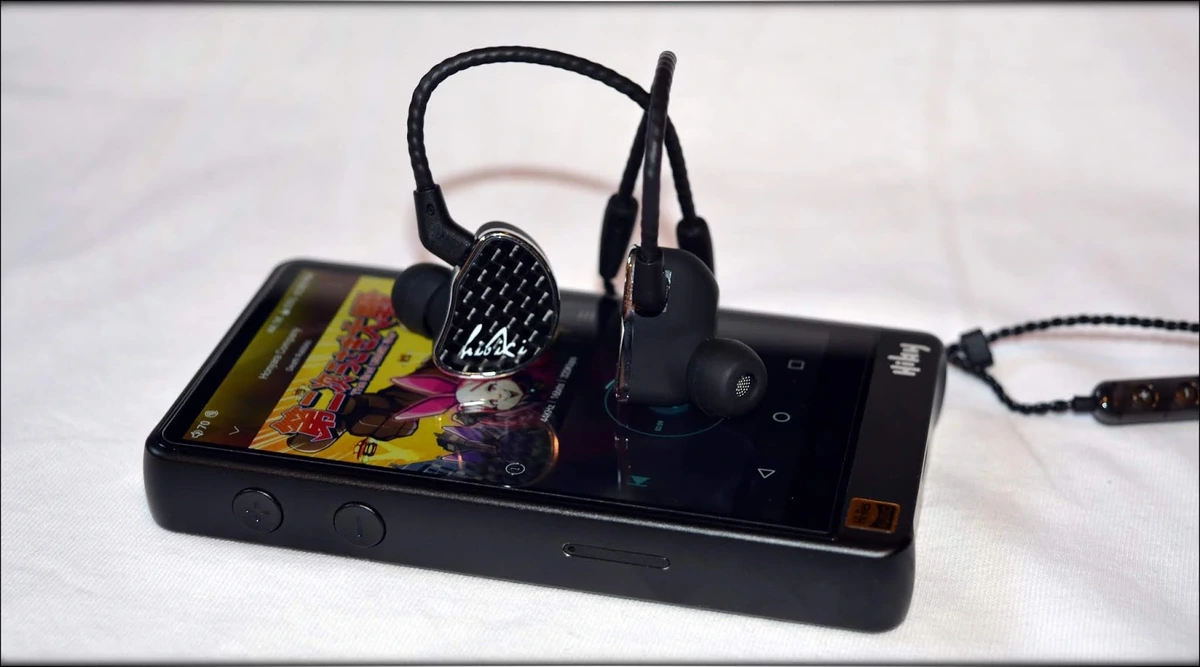
They isolate well form the outside noise, so you can take a walk through noisy places while wearing them, while still enjoying your music, and they have a fit good enough that they can make good jogging IEMs.
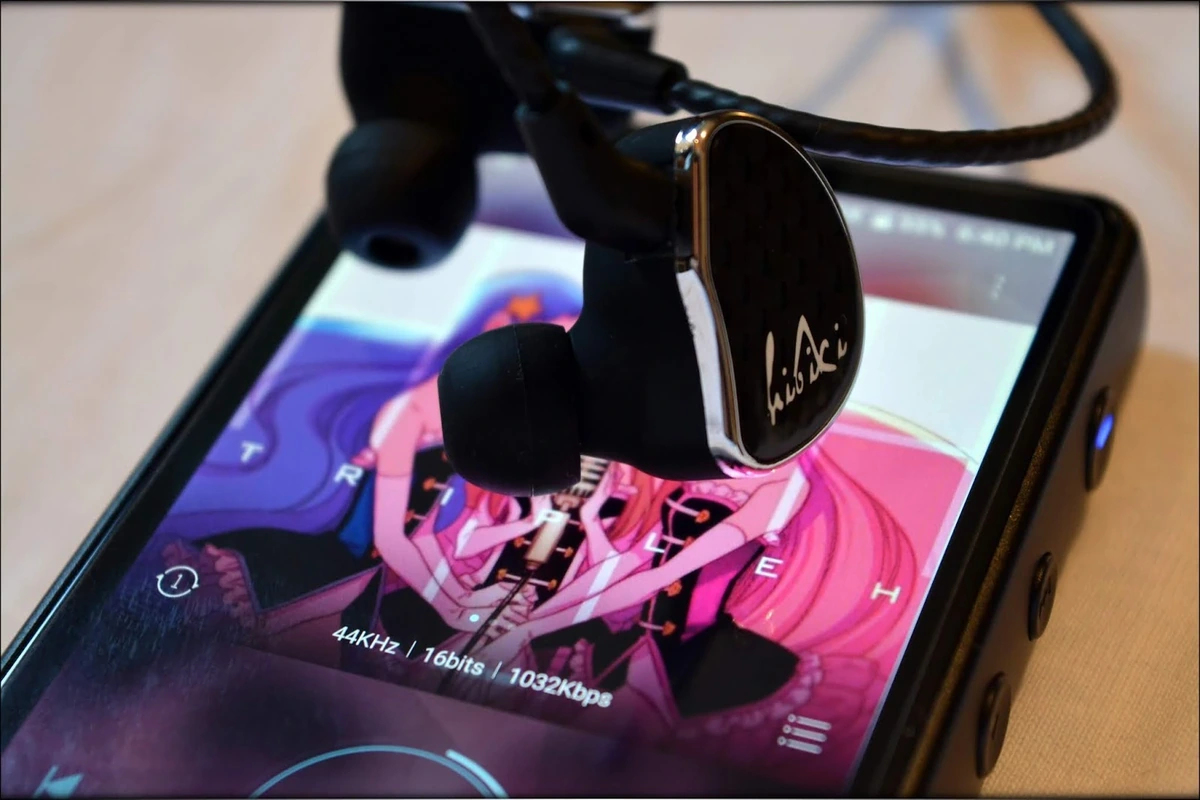
Shozy Hibiki is easy to drive, and they sound good from the typical smartphone, and you don’t really have to worry much about their build quality if they fall and hit the ground, being constructed quite well. There are no microphonics, there is no driver flex, the cable doesn’t stay strangely while walking, it isn’t springy, basically there’s no issue that would stop them from being really good portable IEMs.
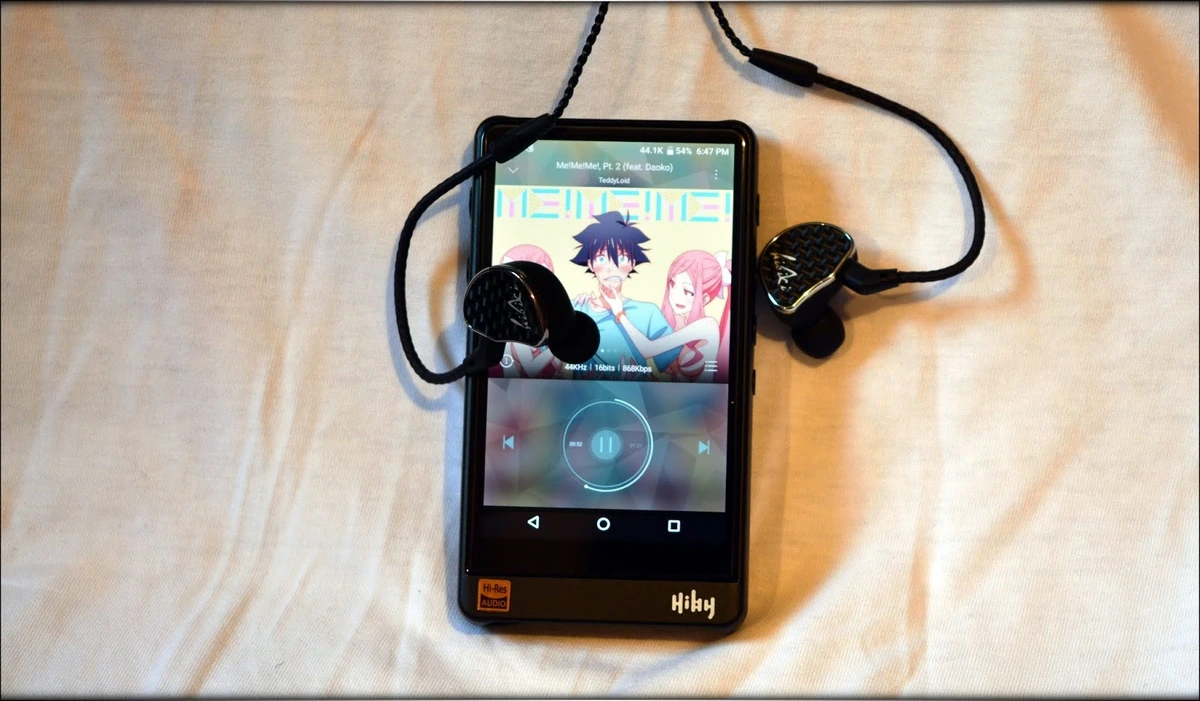
The only thing you’d have to take into account is that their signature, which is pretty mid-centric, isn’t the best to drown out the outside noise, and the sub-bass and treble are even more subtle while outside, than while inside, so this might be good to take into account when considering whether they make good walking companions or not.
All in all, their portability scores are very good and if you already enjoy their signature, they are great IEMs to take on a walk.
Comparisons
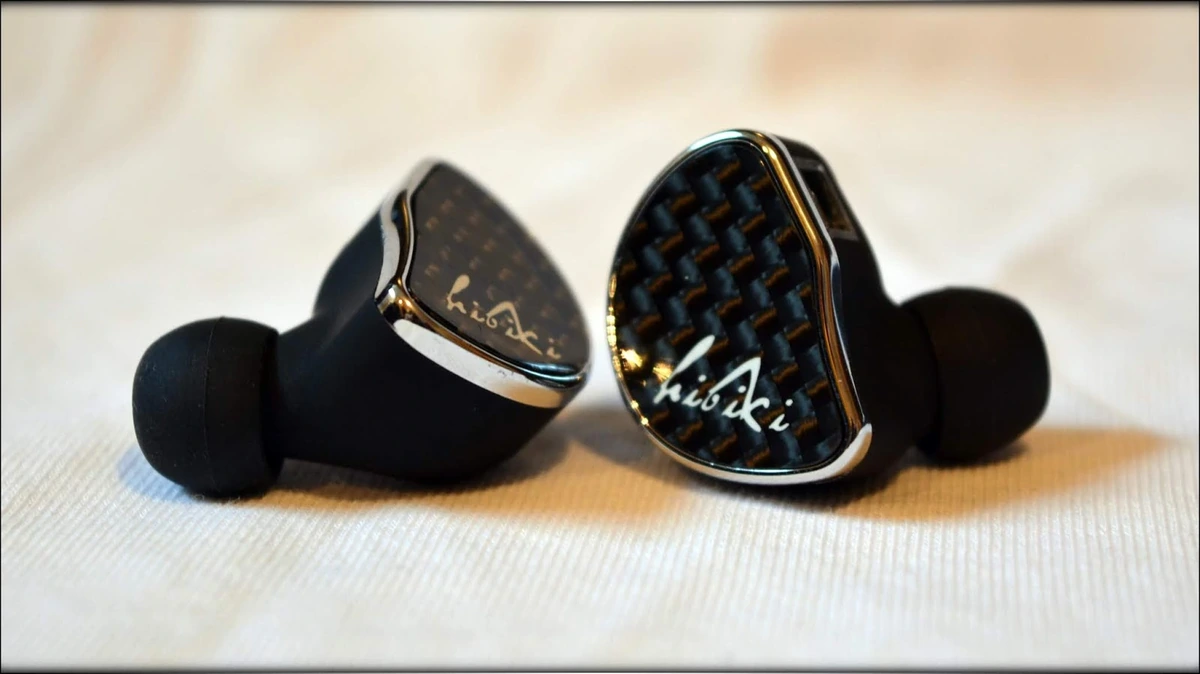
Shozy Hibiki vs Shozy Zero – Shozy Zero was a great IEM produced by Shozy as well. It came in a similar package, but it came with a carrying case. Shozy Zero did not have a detachable cable. Shozy Zero’s build included wood in their construction, but they had a downside which we complained about, which was driver flex. Shozy Hibiki has no driver flex, and has detachable cables, so Shozy improved a lot on the 60 USD IEMs range. The sonic performance is quite different, with Zero being a IEM with a bassy, thick, lush and smooth sound, where Hibiki is a quicker, lighter, more midrange-centric, more revealing, more detailed, larger sounding IEM, with better overall value, and with a more versatile sound. All in all, if you’re a basshead, then Shozy Zero was a fairly good performance, but if you prefer a more versatile sound, then Shozy Hibiki surely is a pretty sweet choice. The fit for Zero works both straight-down and over-the-ear, where Hibiki only works over-the-ear.
Shozy Hibiki vs FiiO F5 – FiiO F5 was and still is a very impressive performer. The main differences between F5 and Shozy Hibiki are that F5 comes with MMCX-based cables, where Hibiki comes with 2-pin connector based cables. Both feel very reliable, but F5 are made from a metallic material, where Hibiki is made of plastic. The ergonomics and comfort are great on both. FiiO F5 has a much bassier sound, with a much thicker overall presentation, and with a more open presentation, being partially open. Shozy Hibiki feels more even, more natural and more mid-centric, with less bass, but more midrange, a bit more detail and clarity in the midrange, and a bit more energy and presence across the whole spectrum, where F5 feels a bit too thick and too smooth. The fit for FiiO F5 is mostly straight down, while the fit for Hibiki is only over-the-ear.
Shozy Hibiki vs Final E3000 – Final’s IEMs are quite nice, but the basic package is quite different. Final E3000 comes with a carrying pouch, but they don’t come with a detachable cable. They come with more tips than Shozy Hibiki, thing which may come in handy. Both Shozy Hibiki and Final E3000 come with good quality tips that should work well for multiple usage scenarios. The build quality is quite different, E3000 being a “Bullet-Type” of IEM, which means that it looks like a thin tube made entirely of metal, where Shozy Hibiki is an over-the-ear IEM with a different ergonomic. Since E3000 can be worn straight-down and over-the-ear, it may be considered more versatile in this aspect, but we can’t complain of the fit Shozy Hibiki either. The sonic performance is quite impressive on both, both having very similar levels of detail, clarity, PRaT/ADSR and soundstage. The main difference is in the tonal balance, where E3000 is slightly more natural, being more even across the board, with more bass and treble relative to the midrange. This means that it also sounds slightly flatter, so if you’re looking for a midrange-forward IEM, then Hibiki would be that, while if you’re looking for something that sounds really natural and organic, E3000 might be the answer to your quest.
Recommended Pairings
Shozy Hibiki is fairly easy to drive, they don’t need a lot of power to get loud, and they sound great even with the most modest smartphone, making them a great companion if you don’t want to invest a lot in the source, but still have a pretty good experience.
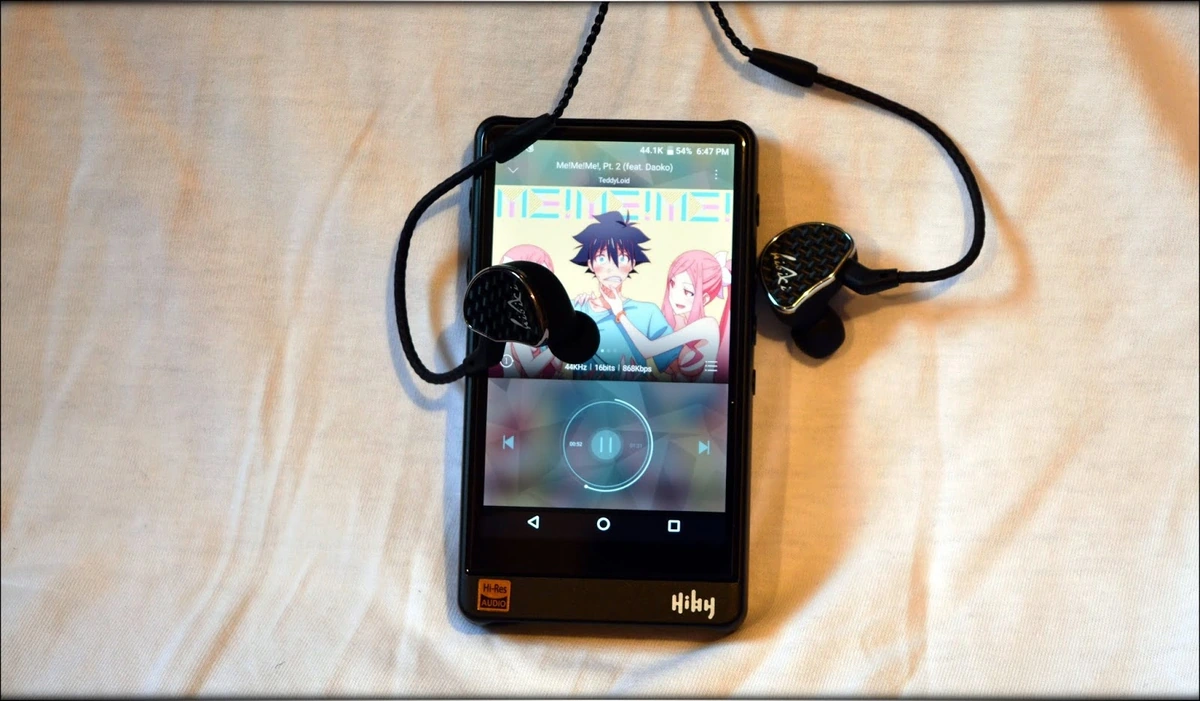
Shozy Hibiki + Shanling M2s – This is a great example of a low-cost but fun-to-use and good-sounding setup. Hibiki and M2s pair well with each other, M2s adds a bit of thickness and impact to Hibiki, making them sound more impactful, and giving them a more versatile signature. M2s is also pretty good on its own, being one of the few DAPs that are this small, yet provide the number of feature it does.
Shozy Hibiki + HIFIMAN Megamini – Megamini is a very basic and minimalist player, but it is even smaller as an overall footprint when compared to M2s, and it has a very vivid and energetic sound. With it, Hibiki gets a little more forward and energetic, they gain a bit more edge in the treble, but also a bit more detail and aggressiveness, making them better for rock and metal music. Overall, with Megamini priced at 100 USD, the whole setup is sweet both in price and performance.
Shozy Hibiki + FiiO M7 – FiiO M7 is a very portable DAP with a lot of power and abilities, especially in the Bluetooth, and wireless part, abilities which aren’t exactly placed in light with Hibiki, which is a wired IEM. On the other hand, M7’s abilities as a standalone player are quite impressive, and compared to M2s, which is slightly thick, and Megamini which is vivid, energetic and slightly forward, M7 feels very neutral and actually brings both the bass and the treble a little more forward, making Hibiki sound more even and giving them a more spacious sound, with more depth, and a bit more detail.
Value and Conclusion
At the end of the review, we must keep in mind that Hibiki is a very affordable IEM, which not only won’t break the bank, but will also provide a good bang for the buck for its price of 60 USD.
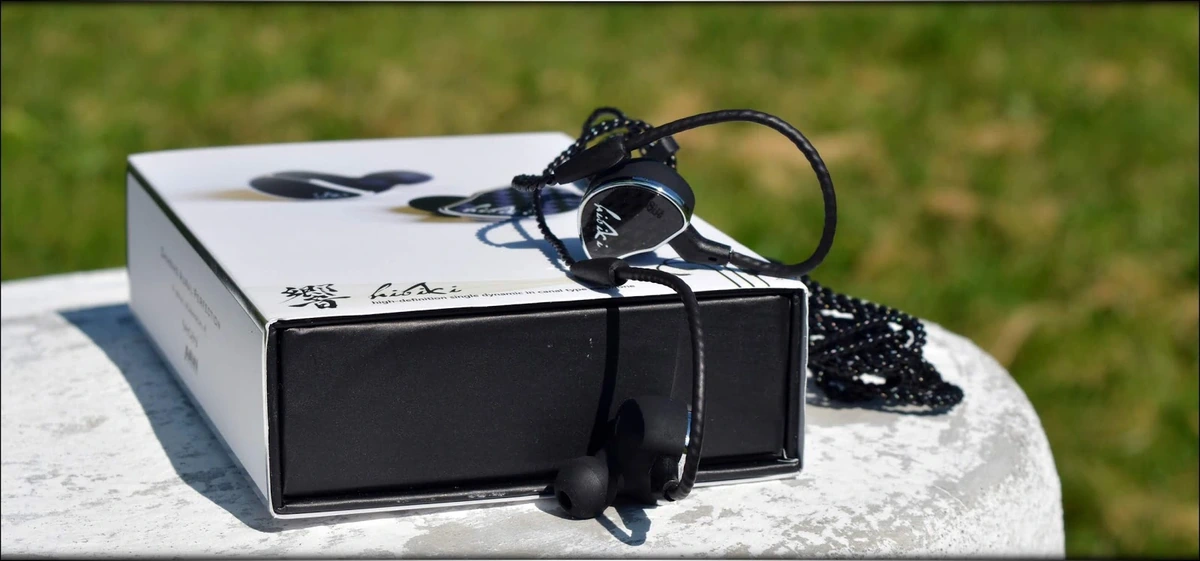
They come in a handy yet premium-looking package, and they come with the basics one will need to enjoy them. Coming with detachable cables, you’re sure you’re going to have an easy time fixing them if anything goes wrong, and they also have a remote on the cable, in case you’re using them with a smartphone, or with a Player that can read remote signals.
The build quality is all plastic, but a very high-quality plastic, they have an shell plate that looks like carbon fiber, and they have a very sleek overall design. The inner plastic feels slightly rubbery to the touch, resulting in a very comfortable fit and, together with the good-quality tips included with them, providing a great overall comfort, even for jogging, or long-hours of listening to music.
The sonic performance is quite impressive and those IEMs coming from China at affordable prices always remind us that the performance of a 60USD IEM is getting better and better, there being quite an arena for those kind of IEMs, where every company tries to squeeze the latest drop of performance for the cost of a IEM. Hibiki is a midrange-forward IEM, also called “flat” by some listeners, who feel that the midrange being more forward compared to other IEMs, especially in relation to the bass and the treble, makes them flat. Regardless, compared to most other 60 USD IEMs which are usually bass-heavy, Hibiki feels mid-centric, with a lighter, quicker and snappier bass, they feel more clear in the midrange usually, with a bit more energy and detail, and they feel smooth and lean in the treble. This kind of signature will surely work well for certain types of vocal-centric music, for Jazz, and for certain types of pop. The leaner treble means that you can enjoy them for hours without suffering from any kind of listeners fatigue.
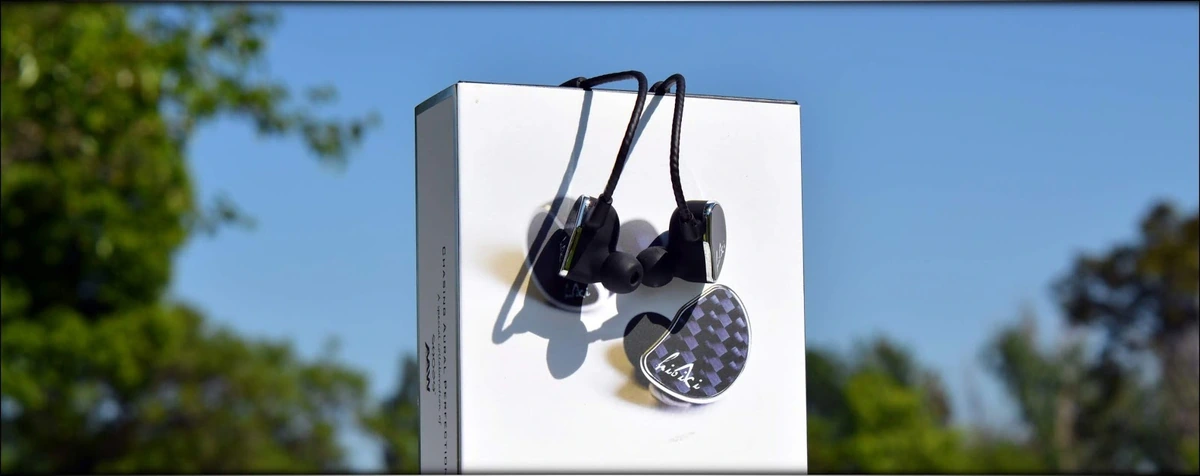
If you’re looking for a great deal on a 60 USD IEM, you should make sure to check on Shozy Hibiki as they bring a lot more than their price tag indicates, they are one of the sweetwest IEMs we tested at this price point, and they are an amazing overall deal, especially for those in love with a clear and vivid midrange, and looking for a good build quality, or for a IEM to take on a jogging session, when working out, or when traveling.
Product Link
You can find and purcahse the latest Shozy products from www.amazon.com here: https://www.amazon.com/s?k=SHOZY
--- Please remember to stay safe, and always have fun while listening to music!---
- If you have a dime to spare, please donate, and help us! It would make the day brighter for me and my wife-
Full Playlist used for this review
We listened to more songs than those named in this playlist, but those are excellent for identifying a sonic signature. I recommend trying most of the songs from this playlist, especially if you’re searching for new music! The playlists are different for Spotify, Tidal and Youtube, and based on the songs I enjoy and are available on each!
https://www.youtube.com/playlist?list=PL_cjBXGmwSHSdGcwuc_bKbBDGHL4QvYBu
https://open.spotify.com/playlist/5J3oloz8Riy9LxEGenOjQ0?si=979ba4f082414be7
https://tidal.com/browse/playlist/330fd544-8e5b-4839-bd35-676b2edbb3d5
--- Contact Us ---






[…] Audio E2000/E3000 vs Shozy Hibiki – Roughly at the same price point, Shozy Hibiki is a nice-looking IEM, with a really interesting design. It has more going on for it with the […]